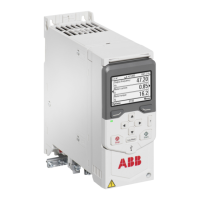Resistor braking
Contents of this chapter
The chapter describes how to select the brake resistor and cables, protect the system,
connect the brake resistor and enable resistor braking.
Safety
WARNING!
Do not do any work on the brake resistor or the resistor cable, when the drive is
energized. A dangerous voltage is present in the resistor circuit, even when the
brake chopper is not operating, or when it is disabled by a parameter.
Operating principle
The brake chopper handles the energy generated by a decelerating motor. The extra energy
increases the DC link voltage. The chopper connects the brake resistors to the intermediate
DC circuit whenever the voltage in the circuit exceeds the limit defined by the control program.
Energy consumption by the resistor losses lowers the voltage until the resistors can be
disconnected.
Selecting the brake resistor
Drives have a built-in brake chopper as standard equipment. The brake resistor is selected
using the table and equations shown in this section.
1.
Determine the required maximum braking power P
Rmax
for the application. P
Rmax
must
be smaller than P
BRmax
. Refer to Reference brake resistors (page 143).
2.
Calculate resistance R with Equation 1.
3.
Calculate energy E
Rpulse
with Equation 2.
12
Resistor braking 141

